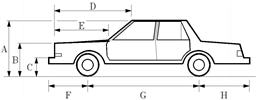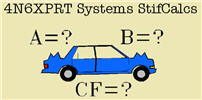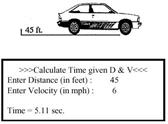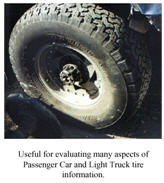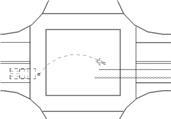Under what operating systems does this program work? Any 32 bit MS-Windows computer, Windows 95/98/Me/2000/NT/XP/Vista.
How do I run your software on a Mac? Two responses to this question in an e-mail group follow
- I switched to a MacBook Pro running VM Ware Fusion 2 with Windows XP pro. I wish I would have switched years ago! I am running all the programs you mention and more just fine. Not a single problem! Contact me off list if you have further questions, and
- I echo that, except I’m running XP Home under Parallels on a MacBook Air. Again, no issues.
Why does the program work so slowly on my computer? Because your computer is old. We have tested the program on everything from a 100 MHZ Pentium with 64 Mb of RAM on up to a current 1.8 GHZ machine running Windows 95 through Windows XP. Due to the amount of data to be crunched, the speed of screen displays is dependent upon your machines processing speed. However, we can say the following with confidence – no matter HOW SLOW the program seems to work, it goes faster retrieving the data through our program than it does TRYING to download the data from NHTSA.
What is the Crush Factor and how is it used? The Crush Factor is a value which is used in the ” speed from skid formula” allowing for a first approximation speed calculation from maximum crush to a vehicle. Papers which explain the derivation and history of the Crush Factor as well as presenting a comparison of results between the Crush Factor approach and the CRASH III approach were presented by Dr. Daniel Vomhof and Daniel Vomhof III at the CRASH’98 conference and can be downloaded from our web site by clicking on the authors names.
How is the Crush Factor used in the 4N6XPRT StifCalcs® program?
- The Crush Factor serves as a measuring stick for how likely a NHTSA crash test will have data from which valid stiffness values can be determined. If the crush factor is near a value of 21 for frontal tests, or near 27 for side/rear tests, the data is likely to be ” pretty good”.
- The further away from these Crush Factor values, the more carefully you should examine the NHTSA data and test notes prior to relying upon your A-B-G stiffness values derived from that test.
- Finally, the Crush Factor can be used to act as a Objective comparison between the relative stiffness of various vehicles, lower value implies ” softer” vehicle, higher value implies ” stiffer” vehicle.
The answers to some of the following questions come from the former safercar.gov NHTSA Frequently Asked Questions page which NHTSA has since replaced. The current (as of 4-24-2013) FAQ’s are a PDF document which is not easy to find. Therefore, we have it on our website and it can be viewed from this link.
Why are there no crash test data in the database for the vehicle I am looking for? From the former safercar.gov NHTSA Frequently Asked Questions page regarding their testing ” NHTSA selects vehicles for testing and/or rating based primarily upon sales volume. Since not all vehicles can be tested, those with smaller sales volume may not have been selected.”
Why are there so few side impact tests in the database? From the former safercar.gov NHTSA Frequently Asked Questions page regarding their testing ” NHTSA was not authorized to side crash test vehicles until 1997. We began with model year 1997 cars, then in 1999 started testing light trucks, sport utility vehicles and vans. NHTSA does not side crash test vehicles over 6,000 lbs. (per FMVSS 214) as these vehicles are generally considered to be commercial vehicles.”
Why are there no recent rear impact tests in the database? From the former safercar.gov NHTSA Frequently Asked Questions page regarding their testing ” Since the NCAP Program has a limited budget, funding is concentrated on front and side impact crashes which are responsible for the highest percentage of deaths and serious injuries. A relatively small percentage of deaths or severe injuries are associated with rear impact crashes.” Additionally, Utility Vehicle rear impact tests are VERY limited in the NHTSA crash test database. A list of the Utility Vehicle Rear Crash Tests [130K] with associated stiffness values based on average and maximum reported crush depths, as generated from the 4N6XPRT StifCalcs program in 2005, can be downloaded by clicking on the link.
So how can I get stiffness data for the vehicle and my collision surface? Within our 4N6XPRT StifCalcs program we allow the user of the program to build a ” class” of vehicle based on weight, wheelbase, length, body style, impact location, or any combination of these criteria. To see the results of a CLASS search for Rear Impact Tests on Utility vehicles, as a pdf document, click the link. The two pages are based on Average crush and Maximum crush, respectively.
How come a NHTSA test is in the database, but I cannot get stiffness values from the test? NHTSA does not require of their testing agencies that they record sufficient data for the calculation of stiffness values for every test performed. If you feel this is a problem, in all seriousness, write NHTSA as well as your Congressman and Senators. For very few dollars more, this data COULD be available.
Why else can’t I get A-B-G stiffness values?
- Stiffness values in a single vehicle test require the following data items – Closing speed, crush width, vehicle weight, and crush depth(s).
- Stiffness values in a multiple vehicle (vehicle-to-vehicle or moving barrier-to-vehicle) test require the following data items – Closing speed, crush width, both vehicle weights, and crush depth(s).
- Within the 4N6XPRT StifCalcsTM program we compensate for missing vehicle weights and ( for front and rear tests ) the crush width based upon published data from our Expert AutoStats® program. If speed, and/or depths are missing from the NHTSA data, no stiffness values can be calculated as these are TEST DEPENDENT!
How often and when do updates come out? It is anticipated that updates will come out once a year, sometime around June of each year. The update will add the new crash tests to the database, as well as correcting any technical problems found the previous year, and adding any new features we feel need to be incorporated into the program. There is a charge for the update. The magnitude of the charge will depend upon how much work goes into the update. When we have a firm charge and shipping date, we will send out notices with an order form to our registered owners at their last known address.
Is there a charge for the update? As stated above, there will be a charge. It is anticipated that for the first few years that charge will be between $190-250.00 (USD). Ultimately, the magnitude of the charge will depend upon how much work goes into the update. When we have a firm charge and shipping date, we will send out notices with an order form to our registered owners at their last known address.
I am just starting out with my business, can I afford the software? We have prepared one economic analysis scenario for the purchase and cost billing to your clients. Of course, you know your clientele and what your region can stand as far as your billing is concerned, so you should consider this to be a model that you can change to suit your situation with regards to cost recovery. The 4N6XPRT Software Economic Analysis can be downloaded by clicking on the link.
Do I have to buy the program, or can I get the data some other way? No, you do not have to buy our program. We will provide you the data for tests, as well as selected Stiffness Calculation pages, at a charge of $40.00 per test. This data will be faxed, or e-mailed to you (as a PDF document) with hard copy and your receipted invoice following in the mail. Please look at our Individual Vehicle Data Search Service page for more information and an order form (via the download).
So if I can get the data form your service, why should I buy the program? Reasons for buying the program include:
- As with the NHTSA online database, we humans are not up and in the office 24 hours a day, seven days a week.
- It is cheaper for you to run multiple tests yourself than it is to have us run them for you. ($40/test – 9-10 tests exceed the price of the program)
- You can ” play” with the program to see what may be close to your desired vehicle when the NHTSA database does not contain the particular vehicle you are looking for, we won’t.
- You can print out ALL of the various Stiffness Calculation sheets, our service only provides the Stiffness Calculation sheets we feel are appropriate.
Why does the program keep ” bombing” giving me an error? This most commonly happens when a folder, file, or group of files is copied off of a CD. To change the attributes so that you can read and write to those files, please download the PDF procedure document [1.7 MB] which walks you through the necessary steps.
What if I have no complaints or problems? Tell your friends, neighbors, attorneys, police departments, and vehicle sales dealers, so that they too can have a copy!
For more on this new program, and to see a sample printout, please download the documents from the following links.


